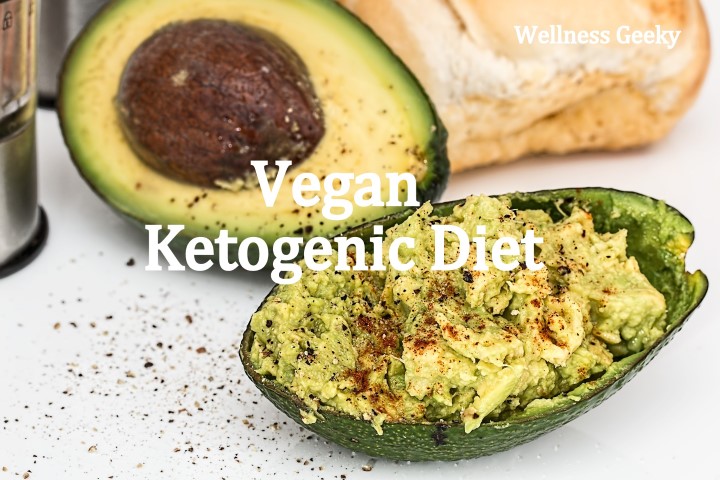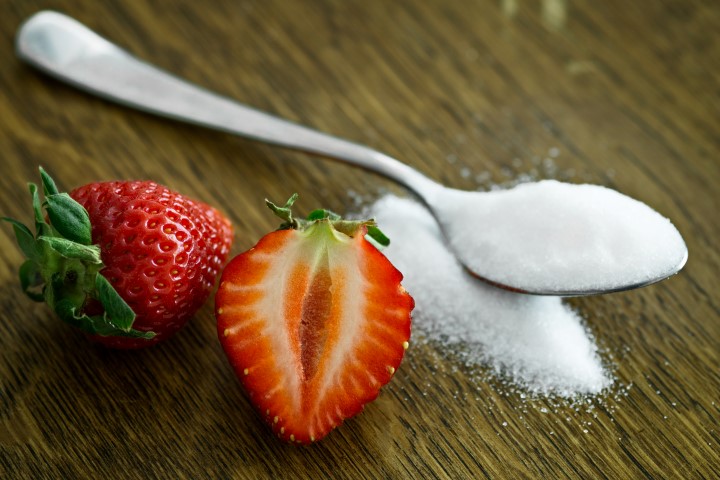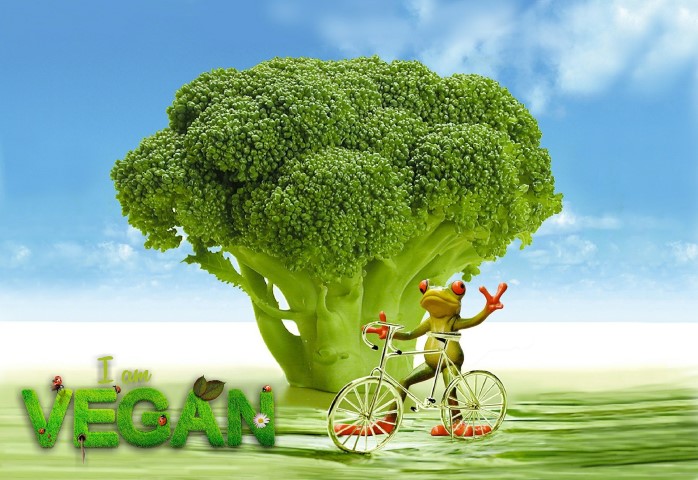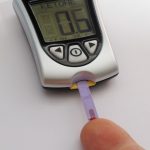
Both vegan and ketogenic diets are known for their amazing power to heal various health problems.
But let’s find out if these powers can be combined by bringing vegan and keto diets together.
Despite that, those two diets are somewhat opposite in their classical form (as the classical keto diet relies heavily on animal products) they can be adjusted to go well together.
For those who are new to the Keto world, let’s make a brief overview of the diet.
If you are new to all of this, (HERE is a great book to start (FREE on kindle)
About Ketogenic Diet
The ketogenic diet is a low-carb, high-fat diet (50-70% of caloric intake) with moderate consumption of proteins. It was introduced almost a century ago mainly as treatment for Epilepsy in kids.
This food regimen shifts your body's metabolism into the state of ketosis. This has positive effects on numerous health conditions and supports natural no-starvation weight loss.
Metabolic changes in the Ketogenic diet

Your body uses glucose as the main source of energy for body functioning. Most dietary carbohydrates are digested or transformed into glucose, which is then used by all your cells.
When you reduce your digestible carbs (excluding dietary fibers) intake to 20-50g per day your body starts to switch to alternative fuel source – ketone bodies.
Ketones are products of fat metabolism that can be used by almost all cells in our body for energy purposes instead of glucose. There are less than 5% of cells that can’t use ketone bodies, mainly located in the brain.
However, consumption of 20-50g of carbs per day is enough to satisfy the glucose demands of those picky cells, as well as replenish glycogen storage in the liver.
.
Benefits of Ketogenic diet

Keto diet has numerous benefits like:
- Sustainable weight loss
- Reversal of type 2 Diabetes
- Improvement in physical endurance
- Better mental focus and memory
- Epilepsy treatment
- Migraine headache improvement
- Acne improvement
- Neurological degenerative diseases improvement (Parkinson's, Alzheimer's)
- Metabolic syndrome relief
- Cancer prevention and treatment
- Leptin levels normalization
About Vegan Diet

A vegan diet is a diet that excludes any type of animal product, unlike vegetarian diets that can allow the consumption of eggs, dairy, seafood, or fish.
A vegan diet is beneficial for managing heart disease risks as well as type 2 diabetes, high blood pressure, and lower cancer risk according to certain studies.
However, as pointed out in the article by Vegan Liftz, a vegan diet in the long term can cause certain deficiencies, especially B12 vitamin deficiency, and need to include mindful supplementation with vitamins and minerals, best under a doctor’s supervision.
.
Mistake many vegans do
There are commonly two reasons, why a person decides to go vegan.
The first one is for health benefits and the second and more spread one is because of ethical or ecological issues. The biggest mistake for a newbie vegan, who was raised on a standard American diet, is to stop eating any animal products without changing other dietary habits.
Any healthy diet should be based on whole and minimally processed foods. Thus, vegans who reject animal products but embrace highly processed meat substitutes, sugary and starchy foods (potatoes, bread, or pasta, not talking about sweets), hydrogenated oils (butter substitute spreads), and other vegan-friendly junk food, really make a step in the wrong direction.
How the ketogenic approach can improve the vegan diet
A classical vegan diet is really heavy on carbohydrates. Dependence on pasta, bread, and starchy vegetables can have many negative health effects. Such as blood sugar spikes and drops, increased bad cholesterol (LDL), hormone Leptin imbalance, and an increased sense of hunger.
By incorporating a ketogenic approach to your vegan diet you will resolve easy-digestible carbohydrates over-consumption typical for a vegan diet while keeping all other benefits of a meatless diet.
How to Get Into the Ketosis on Vegan Keto Diet
As was already mentioned to get into ketosis you need to consume around 20-50g of carbs per day. A person can easily avoid carbs by eating meat, fish, and eggs that are naturally low on carbs. But because you’re a vegan and don’t eat any animal foods it can get a little bit more tricky and requires more organization.
The good thing about the keto diet is that you don’t need to eat a lot of proteins which could be difficult on a vegan diet. However, if you’re trying to grow some muscle on keto diet for vegans, plant-based protein powders are a must for you.
Keto-vegan rule #1

Log your food intake – logging is a very important part of the vegan ketogenic diet, as it’s very easy to overeat carbs on a plant-based diet. There are plenty of apps (free and paid) as well as websites where you can do that. Logging what you eat also can help you to understand in what nutrients your typical diet is deficient and supplement accordingly.
Also consider that only digestible carbohydrates are counted, as carbs. There is no limit on dietary fibers (carbohydrates we can’t digest) you can eat during one day.
Keto-vegan rule #2

Check your body for signs of ketosis – when your body switches to ketosis, you have ketone bodies in your blood, in your urine, in your breath, and in your sweat. You can buy devices and strips that can measure the level of ketones.
The most accurate and the most expensive way (around 3$ a day plus cost of the device) is ketone blood test strips. A less accurate and much cheaper way (6$ per month) to check ketones is urine ketone strips (which can be bought here) or an acetone breath analyzer.
Knowing, whether you’re in ketosis, will help to adjust your carb consumption. A potential increase in allowed carb intake can improve sustainability and the ability to enjoy the diet through a wider choice of foods.
Vegan Keto rule #3

Follow the vegan ketogenic diet food list – following the list of vegan ketogenic-friendly foods (shortlist can be found below), can make it easier to stay in ketosis by organizing your diet around those foods. And don’t forget that the keto diet consists of 50-70% of fat, meaning that any vegetable you eat, you should see as a vehicle for good fat ingestion. Now on, fat-free is not your friend.
| Portion size - 1oz | Fat (g) | Protein (g) | Digestible Carbs (g) |
| Olives | 4 | 0.3 | 0.2 |
| Tofu | 2.4 | 4.4 | 0.6 |
| Avocado | 3.5 | 0.5 | 0.7 |
| Raw Walnuts | 16.5 | 6.7 | 0.9 |
| Tempeh | 2 | 5.2 | 1 |
| Raw Coconut Milk (unsweetened) | 6.7 | 0.6 | 1 |
| Brazil Nuts | 19 | 4.1 | 1.4 |
| Raw Macadamia | 21.2 | 2.2 | 1.6 |
| Raw Coconut Meat | 9.4 | 0.9 | 1.8 |
| Raw Hazelnuts | 17 | 4.2 | 2 |
| Kidney Beans (boiled) | 0.1 | 2.4 | 4.6 |
| Raw Pistachio | 12.4 | 5.8 | 4.9 |
Keto-vegan rule #4

Supplement wisely – vegan diet puts a restriction on one type of food and ketogenic on others, meaning that a vegan keto diet is even more restricted and not very wide in choices. Eating the same foods, even the healthiest ones, over and over will cause over-consumption of some nutrients and lack of others. With help of food logging, you should be able to pinpoint what you’re missing in your diet and supplement with it.
Always choose high-quality vitamins and minerals in the most bio-available form. As a vegetarian diet will always benefit from vitamin B-12 supplementation, it’s worth adding that the methylated form of B-12 (methylcobalamin) is always recommended.
Keto-vegan rule #5

Listen to your body – last point, but maybe the most important for any diet. Learn to listen to your body. We are all different, we respond to the same diet differently. Trust yourself. If you feel bad on a ketogenic vegan diet, especially after longer periods of time like a month or two after you started keto. Consider adjusting your diet accordingly. Either by increasing the number of quality carbs you eat per day, or by shifting fat type balance (saturated/unsaturated or omega-3/omega-6) in your diet, or switching to a more sustainable vegetarian keto diet.
And don’t forget to drink a lot of water and replenish electrolytes (Sodium and Potassium).
Vegan KetoFood List
It's fun to discover new ways to shop, cook, and eat when you're venturing into a new ketogenic meal plan lifestyle. In addition to recipes for vegans and vegetarians, here's a helpful food list to keep close at hand.
Oils and fats. Choose nuts, coconut oil, olive oil, and butter when you’re picking fat sources.
Dairy: The good news is dairy is fine, and you can pretty much stick to what you like. Hard cheeses are lower in carbs and always opt for full fat.
Vegetables: Leafy green vegetables are the healthiest, and those that grow above ground and best. Think spinach, leafy greens, broccoli, cauliflower, cabbage, peppers, eggplant, tomatoes, green beans, asparagus, cucumber, and zucchini.
Protein: Tofu, nuts and nut butter, egg whites, miso, tempeh, and cheese are all good sources of protein.
Fruit: Blueberries, blackberries, strawberries, and raspberries.
Liquids: For drinks, it’s always best to stick with water. If you like a bit of flavor, squeeze in some lemon or lime juice. If you like sweet tea or coffee, caffeine is best in moderation, and use Stevia for sweetening.
Vegan Keto Snacks
Rounding off this lineup is our delicious breadsticks, which are the perfect way to finish off a hearty meal. This site also takes pride in making it easy to get involved. You’ll find links to contact and write the creators, there are videos and recipes so you can get involved, and you’ll also be able to join in on the conversation and have a voice. This site has some unique, healthy recipes, with the healthiest Keto diet going out the window (here’s an eye roll).
The recipe range is vast, from salads to bread, to mains to even Keto desserts. Not only does this site have a large range of recipes but also weekly updates so you don’t get bored of a particular dish. As a smaller site, it does not have as many recipes as the bigger sites. This is mostly due to the fact that they are trying to create a community and having the discussion going is much more important than having one big recipe book. However, they still have plenty to offer.
What to Expect in the First Weeks of Keto Diet
Your body needs some time to accustom to a fuel switch it runs on. Usually, it takes around 2 weeks for the body to start living on ketones efficiently. During this transition time, you can experience different symptoms which are generally called by dieters keto fever. This can include fatigue, headaches, and other symptoms, which also could be related to intoxication from rapid fat loss. To pinpoint intoxication problems try taking sorbents such as activated charcoal or bentonite clay, drink plenty of water, and get rid of toxins through the skin with sweat-generating activities like hot yoga or sauna. Especially that sauna has many other amazing health benefits.
Bottom Line
A ketogenic vegan diet can be a valuable tool in reaching your specific fitness or health goals. However, it’s a very restrictive diet and can be hard to sustain in the long run. Be mindful, listen to yourself, and adjust the diet to accommodate your needs and incorporate your values.
.